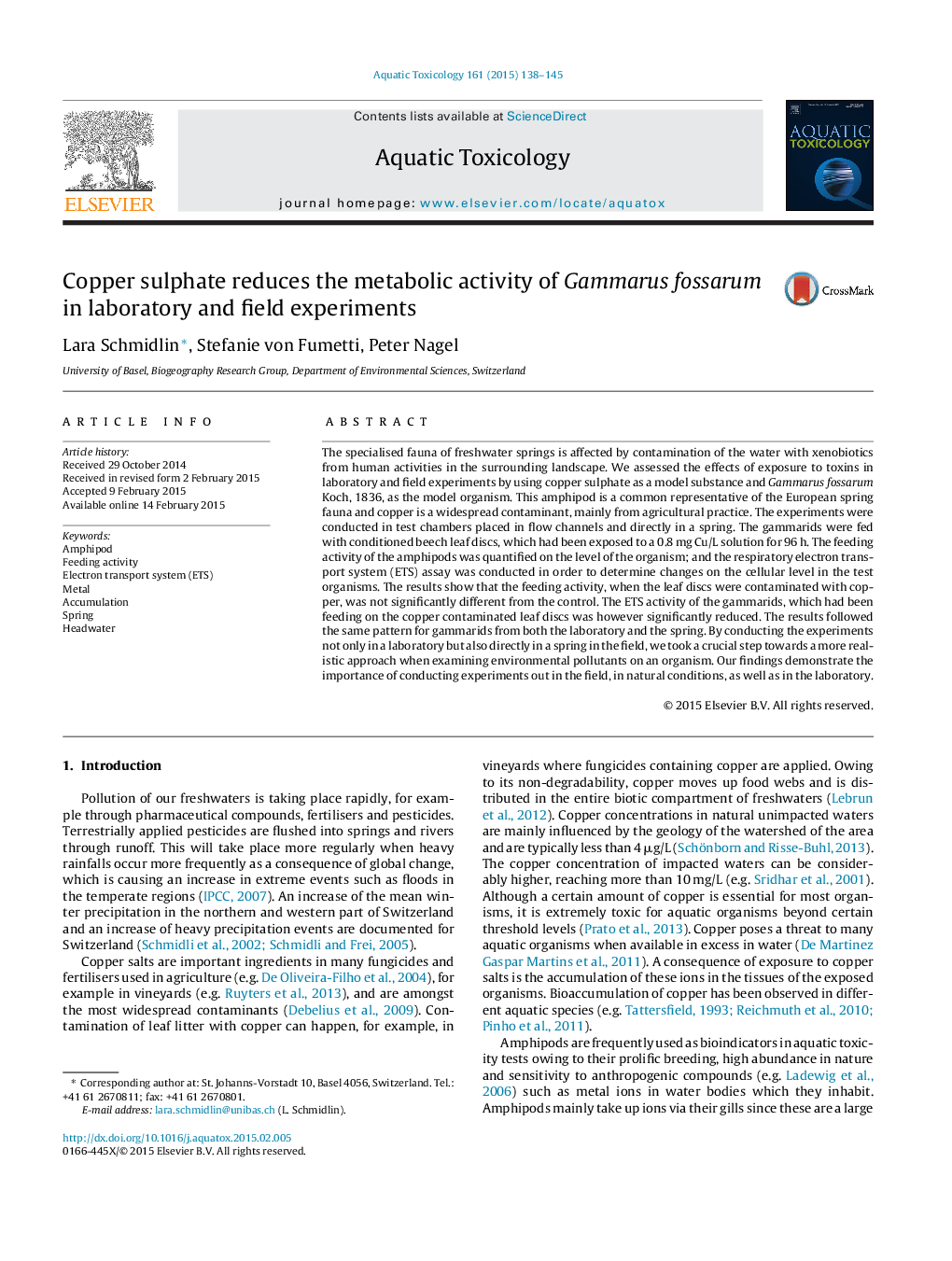| Article ID | Journal | Published Year | Pages | File Type |
|---|---|---|---|---|
| 6382205 | Aquatic Toxicology | 2015 | 8 Pages |
Abstract
The specialised fauna of freshwater springs is affected by contamination of the water with xenobiotics from human activities in the surrounding landscape. We assessed the effects of exposure to toxins in laboratory and field experiments by using copper sulphate as a model substance and Gammarus fossarum Koch, 1836, as the model organism. This amphipod is a common representative of the European spring fauna and copper is a widespread contaminant, mainly from agricultural practice. The experiments were conducted in test chambers placed in flow channels and directly in a spring. The gammarids were fed with conditioned beech leaf discs, which had been exposed to a 0.8 mg Cu/L solution for 96 h. The feeding activity of the amphipods was quantified on the level of the organism; and the respiratory electron transport system (ETS) assay was conducted in order to determine changes on the cellular level in the test organisms. The results show that the feeding activity, when the leaf discs were contaminated with copper, was not significantly different from the control. The ETS activity of the gammarids, which had been feeding on the copper contaminated leaf discs was however significantly reduced. The results followed the same pattern for gammarids from both the laboratory and the spring. By conducting the experiments not only in a laboratory but also directly in a spring in the field, we took a crucial step towards a more realistic approach when examining environmental pollutants on an organism. Our findings demonstrate the importance of conducting experiments out in the field, in natural conditions, as well as in the laboratory.
Related Topics
Life Sciences
Agricultural and Biological Sciences
Aquatic Science
Authors
Lara Schmidlin, Stefanie von Fumetti, Peter Nagel,
